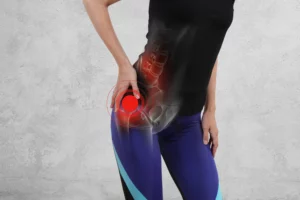TWO TYPES OF CALF INJURIES:
- Acute: This type of calf injury occurs when there is sudden calf pain, ongoing lingering and discomfort.
- Biomechanical/ fatigue induced: This type of calf injury occurs gradually, with worsening cramps or pain whilst running. Discomfort often settles when not running.
CONTRIBUTING FACTORS TO CALF INJURIES
- Shoes: Minimalistic shoes can increase the force through the forefoot and increase the load on the calf and Achilles tendon by up to 10%. When changing shoe design it is recommended to reduce the intensity/ duration of the runs initially, as this may reduce the risk of injury.
- Increasing training intensity faster than your body can adapt: either introducing hills, increasing speed or increasing the frequency of your runs too quickly will not allow the calf muscles to adapt.
- Age: Sadly, the older you are, the increased likelihood of injury in the calf muscle.
- Previous injury: Once you have injured your calf, the likelihood of re-injury is high. This is thought to be due to poor rehab and lack of awareness of contributing factors.
- Calf muscle strength/lack of endurance: Check out how you compare to the ‘normal’ values of a single leg raise in the table below!
| Median Number of Calf Raises | ||
| Age (decade of life) | Male | Female |
| 20 | 38 | 31 |
| 30 | 33 | 28 |
| 40 | 29 | 25 |
| 50 | 24 | 23 |
| 60 | 15 | 17 |
| 70 | 10 | 15 |
A study in 2017 by Herbert-Loscier, with fatigue measured by the onset of muscle tightness.
ANKLE INSTABILITY:
To test for ankle instability, stand on one leg, on your toes for 30 seconds. Well done if you lasted the whole 30-seconds!
MANAGEMENT OF CALF INJURIES:
Acute injuries
- Ice, compression, elevation initially and a heel raise, or walker boot may be needed to enable the calf to rest for the first few days.
- Check with a physiotherapist as the grade of the injury will dictate the rehabilitation.
- The focus will be on restoring range of movement and secondly strength.
- The final phase will be targeted progressions exercise to get you back to full activity – running, walking, playing football – the muscle needs to be robust to ensure you can be confident in its performance at all times.
Biomechanical/ fatigue induced
- An initial assessment by a physiotherapist to look at the range of movement and strength of the lower limb.
- This will enable a targeted, graduated program to address the cause of the fatigue/biomechanical calf pain.
- The assessment and management may also include a running assessment and specific advice on footwear.
- The final stage of rehabilitation will give you the tools to maintain the strength and endurance of the lower limb muscles to avoid recurrence.
NEED FURTHER ASSISTANCE?
If you require any further guidance or information regarding the treatment and management of calf injuries, contact us today! Please call us on 02 9907 0321 to speak with a physiotherapist.


